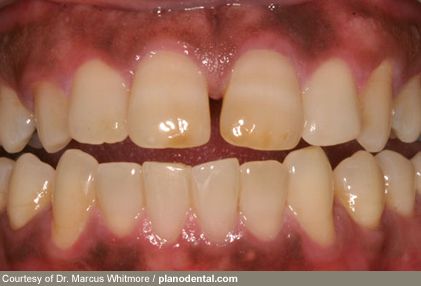
According to a surprising new study, people who have more dental cavities are at lower risk of being diagnosed with head and neck cancer, compared with patients who have few or no cavities.
Dental cavities (or caries) are caused by tooth decay. This is when the bacteria present in the mouth make lactic acids that strip away minerals in the tooth by fermenting carbohydrates.
According to the researchers from the University at Buffalo, NY, previous studies have shown the bacteria that causes tooth decay is linked to an immune response, which may be protective against cancer.
For this study, published online in JAMA Otolaryngology - Head and Neck Surgery, the researchers set out to determine if there is a significant link between dental cavities and Head and Neck Squamous Cell Carcinoma (HNSCC).
The study involved 399 patients newly diagnosed with HNSCC, and 221 participants without the cancer who were all selected from the Department of Dentistry and Maxillofacial Prosthetics at Roswell Park Cancer Industry between 1999 and 2007.
The researchers analyzed the dental history of all patients, particularly their history of dental cavities, by measuring the number of decayed, missing and filled teeth.
Dental cavities a form of 'collateral damage'
Of the 399 patients with HNSCC, 146 (36.6%) had oral cavity squamous cell carcinoma (SCC). Oropharyngeal SCC occurred in 151 (37.8%) patients, while 102 (25.6%) had laryngeal SCC.
The results of the study overall showed that those who had high cavity numbers and who placed in the top third of participants were less likely to have HNSCC, compared with participants who had low cavity numbers in the bottom third.
The study authors explain:
"Caries is a dental plaque-related disease. Lactic acid bacteria cause demineralization (caries) only when they are in dental plaque in immediate contact with the tooth surface. The presence of these otherwise beneficial bacteria in saliva or on mucosal surfaces may protect the host against chronic inflammatory diseases and HNSCC.
We could think of dental caries as a form of 'collateral damage' and develop strategies to reduce its risk while preserving the beneficial effects of the lactic acid bacteria."
The researchers say that a potential strategy to reduce the risk of dental cavities while still preserving the lactic acid bacteria could be to implement mechanical plaque control, preservation of saliva and use of fluoride, as well as controlling diet and other risk factors.
They add:
"Future studies assessing the potential effects of the oral microbiome and associated immune responses on HNSCC will help elucidate the biological mechanism of the clinical association that we have observed in this study."
Medical News Today recently reported on a study that suggested poor oral health and gum disease could lead to a higher risk of throat cancer.
Written by Honor Whiteman
Academic Journal














